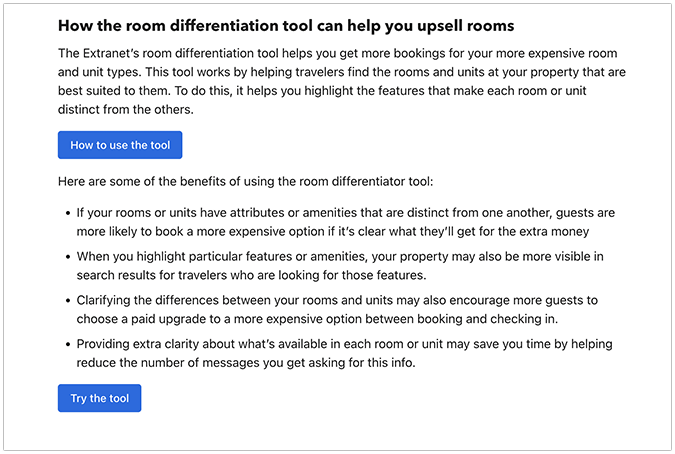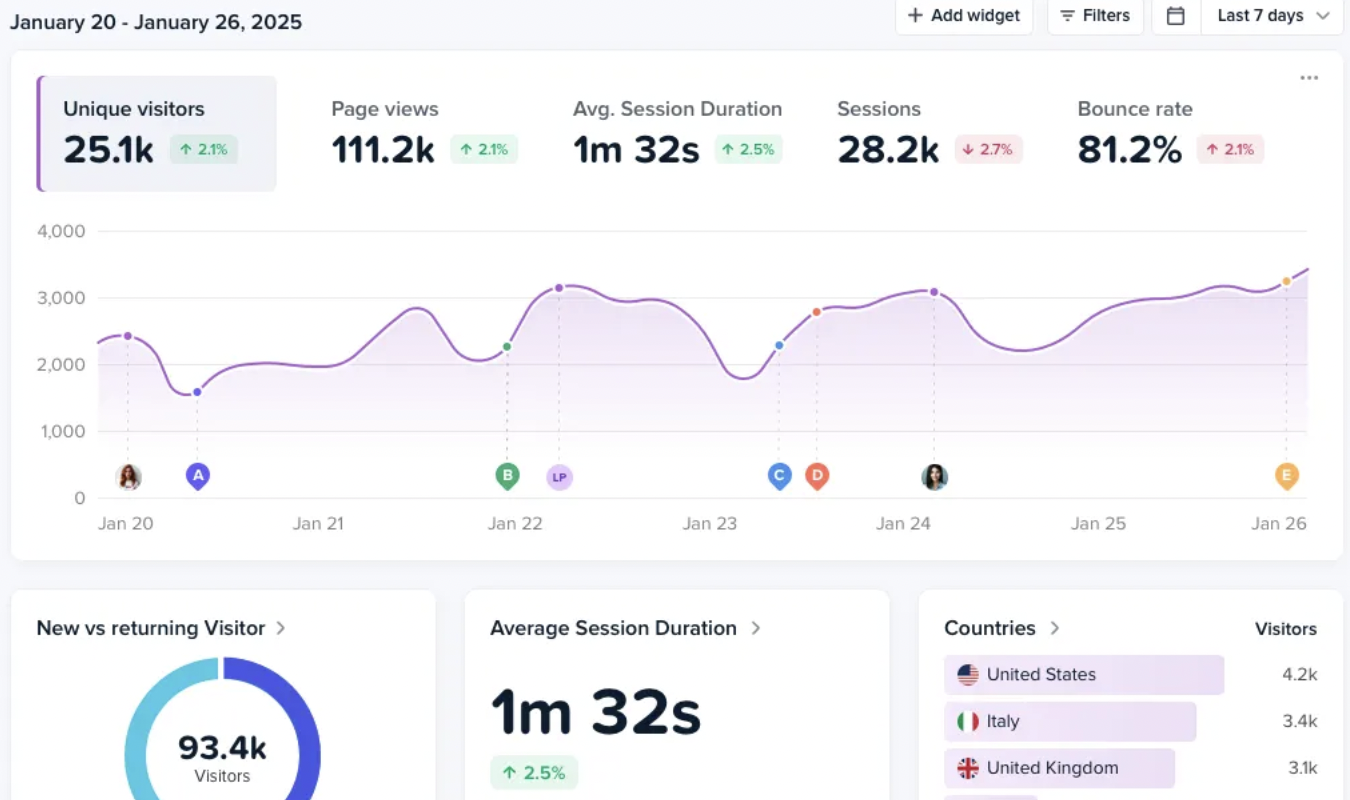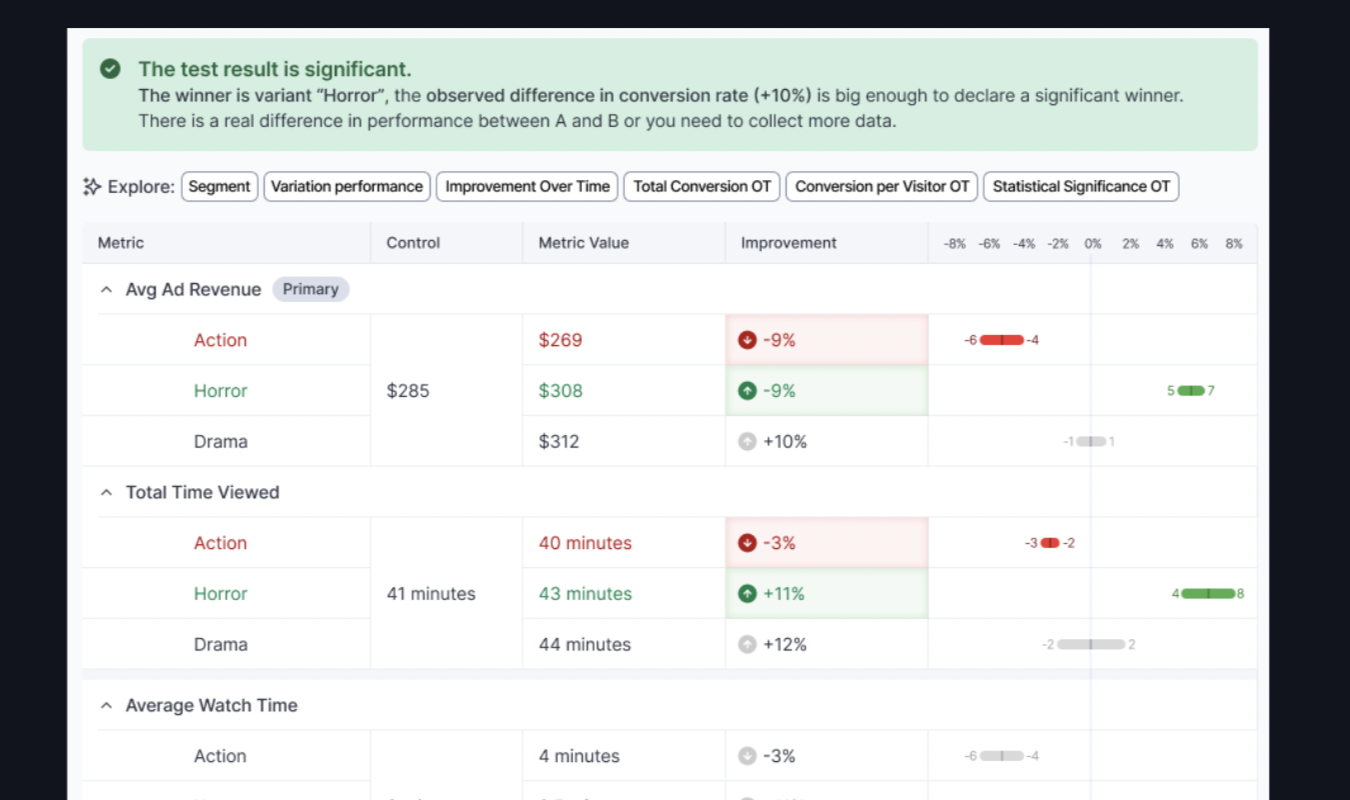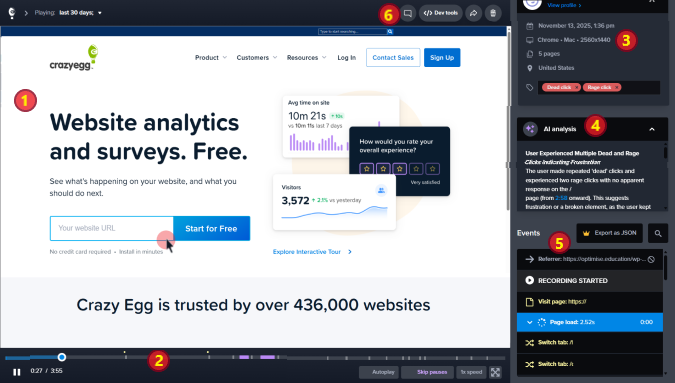Upsells and cross-sells, also known as upselling and cross-selling, are popular sales and marketing strategies used to increase business revenue, drive a higher average order value (AOV), and improve long-term customer satisfaction.
Both strategies share a common goal: offering extra value by identifying the buyer’s shopping preferences, ultimately creating a mutually beneficial scenario where both the business and the customer walk away with additional gains from what’s typically a single transaction.
Despite their similarities, there are also some notable differences between upselling and cross-selling. Upselling aims to increase the quality of a purchase by leveraging advanced or premium packages, while cross-selling tries to boost the quantity of sold items by suggesting similar products the customer likely needs alongside their original purchase.
Here’s a table illustrating the main differences between upsells and cross-sells:
| Strategy | Upselling | Cross-Selling |
|---|---|---|
| Definition | Nudges the customer toward buying a premium or a more feature-rich version of the original product. | Offers additional products and items alongside the original purchase. |
| Main goal | Increases transaction value and profit margin per single sale. | Increases average order value (AOV) and improves new product adoption. |
| Customer benefit | Provides a better product quality, experience, or additional features through an upgrade. | Banks on a more well-rounded solution by combining related products or services. |
| Funnel timing | Usually appears while the product selection takes place or immediately before checkout. | It can appear both during and after the purchase has been made. |
| Examples | Upgrading from a Basic to a Premium domain hosting plan. | Adding a mouse, keyboard, and headphones when buying a PC. |
| Keywords | “Unlock exclusive benefits with Premium”, “Upgrade to Pro for more features.” “Double your order value for just $25 more.” | “Items frequently bought together”, “Customers also bought”, “You may also like.” |
What Are Cross-Sells?
Cross-selling is a promotional, sales, and marketing strategy that encourages customers to buy extra products on top of their original purchase, sold separately but often wrapped up in a single bundle consisting of two or more complementary items. For example, a customer browsing for a winter coat would also likely be interested in purchasing gloves, a wool beanie, and thermal socks to complete their cold-weather look.

The key to a successful cross-selling campaign is suggesting items that align organically with the customer’s initial purchase. The more complementary the suggestions, the greater the chance the customer will add them to their cart—even if that’s not what they originally planned to do.
In some cases, a well-delivered cross-selling campaign can lead to a 20% increase in annual sales and up to a 30% increase in EBITDA (Earnings Before Interest, Taxes, Depreciation, and Amortization), which is directly correlated to a business’s overall profitability.
What Are Upsells?
Upselling encourages customers to buy the premium version of a product they’re already interested in, which is typically more expensive than the base version because of its feature-rich and performance-oriented additions. In other words, it offers an upgraded product version during the item selection process or just before the final purchase (but not always). Unlike cross-selling, upselling doesn’t recommend additional products or items, and is more likely to be encountered in service-based businesses.
For example, a customer might initially decide to choose one of Netflix’s basic plans to stay within their allocated budget. Knowing this, Netflix’s sales psychology department has done two things: first, they’ve highlighted premium features like HD streaming and “great” video quality to effectively dissuade users from purchasing the basic plans. Second, they’ve introduced so-called “decoy” plans to nudge users toward a more expensive option. The streaming juggernaut also uses a “recommended” tag to paint the premium plan as the most cost-effective option for prospective users.
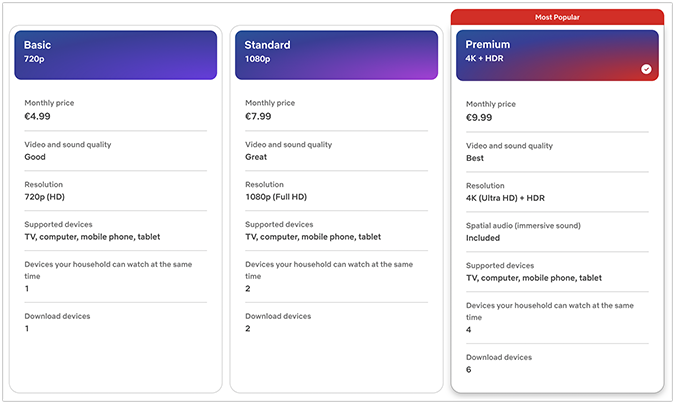
The latter approach could easily be seen as a dark pattern (depending on your advertising ethics and marketing tolerance threshold) and stands as a clear example of the upselling process pushed to its limits.
Cross-Sells vs Upsells (The Key Differences)
Cross-selling and upselling are two core sales techniques, designed to increase revenue per customer without resorting to costly campaigns outside the ready-made processes of the original framework, such as the conversion funnel of an ecommerce website. Both approaches are similar in terms of their overarching end goals (increasing business revenue and profits while preserving customer satisfaction), yet they significantly differ in their presentation, mode of operation, and deployment types.
For instance, cross-selling encourages customers to buy additional products or services that both complement and enhance the value of their original purchase, effectively aiming to create a one-stop shop experience for its customer base in a specific industry or niche. Examples include pairing an Apple iPhone with dongles, chargers, protective cases, and other connectivity gadgets.
On the other hand, upselling mainly focuses on suggesting a higher-tier version of a product or service the customer is already considering to buy, nudging them to spend more in return for a premium offering that reflects all their needs in a single purchase. Streaming service paid tiers are a great example of upselling, as well as something like a hosting provider offering premium top-level domains like “.ai”, “.com”, or “.biz” in place of, for example, the originally intended “.org” purchase.
The specific, granular objective of cross-selling is to sell as many items as possible in a single transaction. It centers on understanding what the customer wants at the time of the transaction, and fulfilling that need with matching products that round out the initial offer.
Upsells have a different underlying objective. They try to provide compelling reasons to upgrade, often highlighting added features, enhanced functionality, and exclusive benefits for buyers to increase the overall spend on a single purchase. If the new price doesn’t reflect the perceived value, there’s a high risk of customer churn, resulting in a decline in revenue and profits over time.
In terms of buyer psychology, cross-selling leverages people’s need for control and convenience, such as pairing batteries with a new RC toy car or adding shoe polish to go with a pair of leather shoes. In other words, cross-selling’s ultimate goal is to leave nothing up to chance, framing the additional items as necessary rather than optional.
Upselling taps into the customer’s need for prestige, exclusivity, and advanced functionality, like opting for a deluxe five-course dinner that’s deliberately left off the standard menu over a regular restaurant dinner, or upgrading a digital library membership from Basic to Pro.
The timing of these two concepts is typically distinct as well. Cross-selling is frequently introduced at various touchpoints in the transaction funnel, such as before, during, or after kicking off the original purchase.
On the flip side, upselling works best when the customer is still in the late phase of the funnel, immediately before fully committing to the purchase. At that point, it’s easier for them to justify spending more money on a product or service they’ve already decided to buy.
Risk- and reward-wise, cross-selling is a lower-risk strategy that incrementally raises revenue and improves customer satisfaction levels without angering the clients. It helps customers feel genuinely understood on a deeper level.
Upselling yields higher returns per transaction, but it’s a riskier avenue than cross-selling. It can prompt intense customer pushback if the price jump isn’t justified. Upselling also requires a more persuasive copy and needs to be framed as a clear value add to the customer’s life.
Lastly, cross-selling typically adopts a slightly more approachable and friendly copy tone, while upselling is more aggressive in its framing, using persuasive and direct language to bump the sale up a notch. Common cross-selling copy examples include “People also bought” and “Related items”, while upselling language can be anything from “Enhance your experience with the Plus tier” to “Unlock extra value with our top-selling plan.”
When implemented effectively, both cross- and upselling can improve average order value (AOV), nurture customer relationships, and lead to long-term loyalty while preserving (and boosting!) your brand’s image.
When and How to Use Each Type
Effectively implementing cross-selling and upselling techniques, either together or separately, is a matter of opportunity, timing, and persuasion—all three aspects working together to create a seamless shopping experience for prospective customers.
Using Cross-Selling
Cross-selling is great in situations when multiple items organically complement the customer’s original choice. Think about it: in an ideal world, you’d want to buy everything you need from a single platform, like an ecommerce shop or an online boutique, with as few clicks as possible, at the best price, and without ever leaving the website. This way, you’re also saving time, escaping needless worry, and overriding that sneaky buyer’s remorse for good.
Additionally, cross-selling is most effective when suggesting lower-cost items, add-ons, and consumables, making it easier for customers to justify their non-planned, borderline spontaneous purchases. It works better either during the shopping journey, via carousels or lists displaying “Frequently bought together” messages, or post-purchase, through something like promotional follow-up emails.
Cross-selling performs best in industries where bundling multiple items is considered the norm, such as fashion and accessories, beauty and wellness, health supplements, tech gadgets, and home decor.
Using Upselling
Upsells should be integrated when the customer shows clear interest in a specific product category and could greatly benefit from the best version of a product. This tactic works best during the late consideration stage, when the customer is still deciding on the purchase and is either actively seeking or doesn’t mind a proposed upgrade.
For example, a premium subscription plan only works if the offer is worth the extra cost, and customers have a sixth sense for knowing whether an item is overpriced or fairly valued (those who don’t are likely to do more research either way). Sometimes, prestige plays a bigger role than vendors might think. To illustrate, a passionate gamer may decide to pay extra for a fancy RGB CPU cooler when a regular one could do the job just as well.
Upselling is especially popular in industries where tiered subscriptions are the rule instead of the exception, such as software and SaaS, online courses and education, travel and hospitality, and telecommunications (for both mobile and fixed data plans).
Using both Cross-Selling and Upselling together
Given their differences, are you allowed to use cross-selling and upselling together? The short answer is: yes. For example, you can gently nudge customers to get the higher-end product with upsells, and once they’ve pulled the trigger, you can follow up with relevant add-ons through a gentle cross-selling approach. The key is to meet the customer exactly where they are in the buyer’s journey, ensuring that neither technique feels overwhelming or out of place.
If done well, your customers will actually thank you for making their shopping experience smooth and enjoyable, cementing your brand as the go-to place for hassle-free purchases and lasting loyalty.
How To Optimize Revenue From Both Cross-Sells and Upsells at the Same Time
Generally speaking, it’s crucial to present cross- and upsell offers in a relevant, personalized context and at the right moment in the funnel. For cross-sells, you need to limit the number of recommendations to avoid overloading the customer with redundant information (which can lead to the aptly named analysis paralysis) and focus instead on a more grounded approach.
Additionally, consider analyzing customer behavior, their purchase history, and their product/industry affinities to come up with relevant suggestions in the long run. Use visual cues, straightforward value statements, and bundled packages to make your pitch more enticing and supercharge your strategies. Avoid introducing cross-sells and upsells before the buyer has made the initial pick, as this can induce decision fatigue and become detrimental to your bottom line.
Specifically, consider optimizing your CRO funnels to get the most out of both strategies in a way that feels natural, free-flowing, and friction-free to incoming visitors. Here’s how.
1. Homepage optimization
First, start with your homepage. Think of it like a digital equivalent of a physical storefront. It’s where customers first encounter your business, so it’s very important to make a strong first impression to get them positively psyched up and lead them toward your best offers.
Leverage your homepage to emphasize top-selling products or services, highlight new arrivals, and showcase popular categories or seasonal clearances. Getting the prospect’s attention early on is a key step to turning them into loyal customers later.
2. Product pages optimization
Since visitors are already showing a buying intent, use product pages as a strategic stop to continue with your cross-sell and upsell offers. Consider recommending premium items, tiers, or exclusive features. You can also extend a large assortment of complementary products to round out the purchase. Use common cross-selling phrases such as “Customer also bought” and “You may also like”, or go rogue with riskier slogans like “Why stop now?” or “Add extra drip” to turn some eyeballs and facilitate action.
3. Cart funnel optimization
Your cart funnel is the final bastion on your site where you can still use cross-sells and upsells to suggest complementary products to your future customers.
Try suggesting relevant additions based on the customer’s existing cart contents, or bundle two or more items together for a sizable discount. To close the deal, emphasize free shipping ceilings to ease customers into a guilt-free purchase.
Cross-selling and Upselling in Action
Here are two notable, real-world examples of each strategy in practice.
1. Cross-selling
Best Buy is a textbook example of multiple cross-selling tactics converging into a single platform, which at times can feel overwhelming for users. Right after landing on the homepage, visitors are immediately greeted with promotional banners like “Deal of the day”, “Today’s top picks”, and “Outlet deals”, all vying for the customer’s attention.
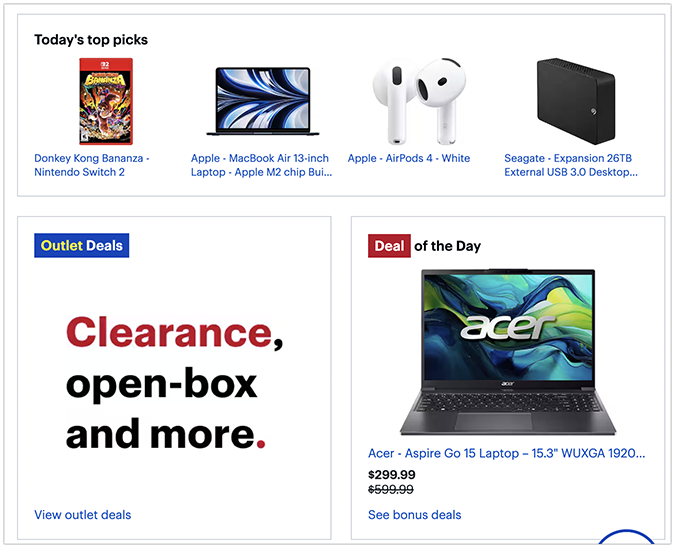
After adding an item to your cart, the cart itself is immediately sprinkled with computer insurance cross-sell offers, of which there are multiple tiers. This is a prime example of cross-selling and upselling working together to maximize the value of each transaction.
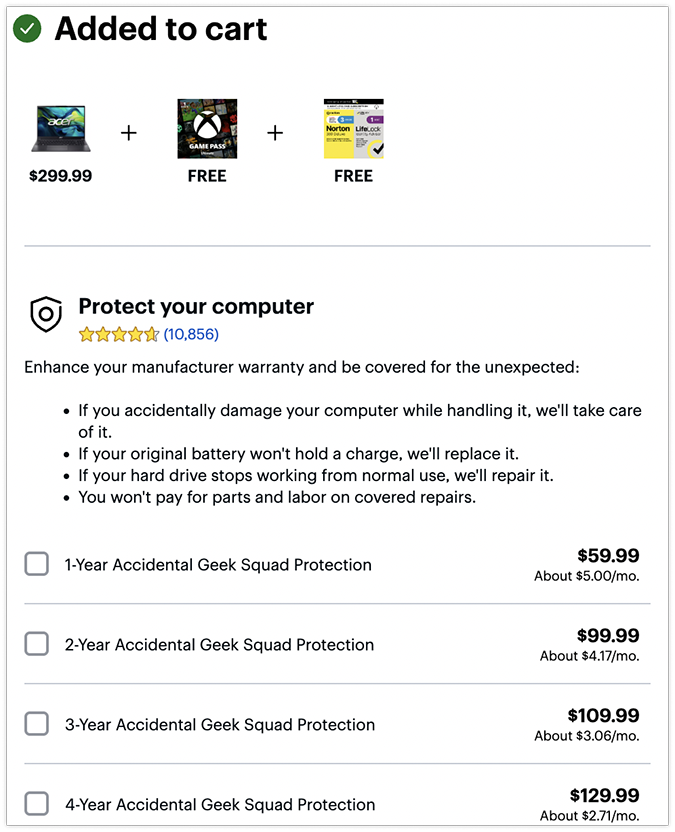
If you navigate to Special offers from the cart’s user interface, you’ll be brought to a cross-selling page that offers a 25% discount on brand-specific accessories related to your cart item. In our case, Best Buy suggests low-end Logitech peripherals, such as selected mice and keyboards, to pair with our exemplary Acer Aspire gaming laptop.
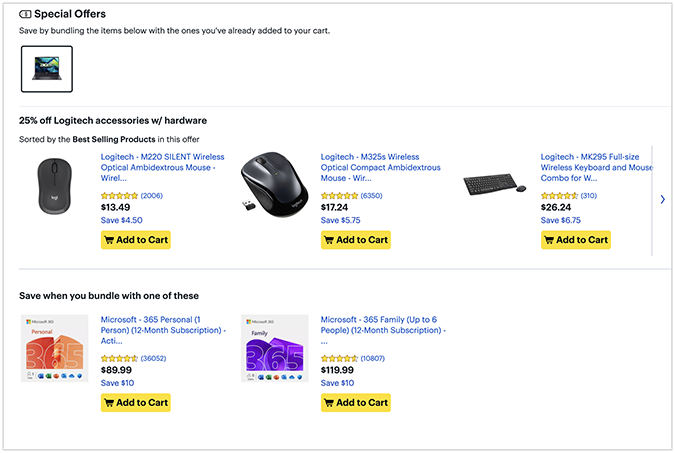
It’s a very aggressive cross-selling implementation, but it likely gets the job done since the company’s 2026 revenue projections look relatively optimistic domestically.
2. Upselling
Booking.com goes the straightforward route, i.e., the platform has a built-in upselling feature on its site that partners can use to upsell their already-booked rooms to guests.
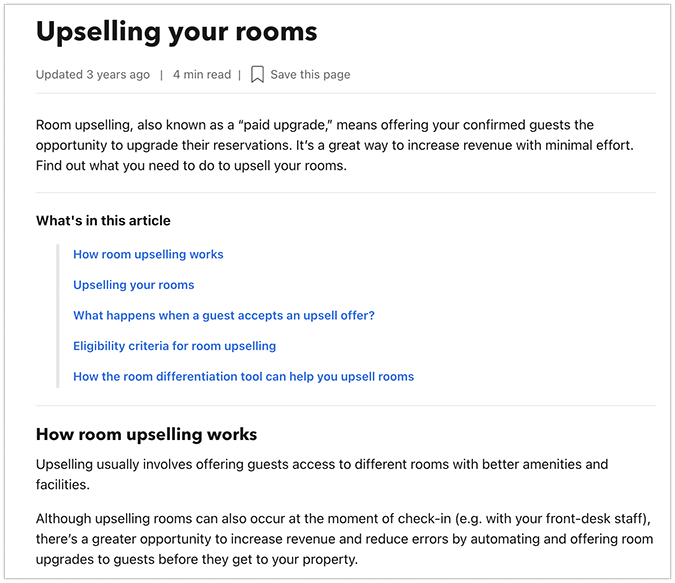
This unorthodox upselling strategy, while not part of the original sales funnel, works by offering better amenities and expanding the existing room’s facilities at a higher price point. It’s prominently displayed out there in the open, which suggests it’s been (and continues to be) a viable strategy for the online travel platform.
Plus, this feature serves a double role: it attracts potential partners to the Booking.com platform with a clear value proposition, while also promising a minimal upfront effort for long-term gains on the partner’s end.
Finally, the site leverages its specifically built room differentiator tool to help partners effectively manage their properties. So, in a sense, this page also functions as a landing page, hitting three targets (upselling proposition, new partner attraction, and conversion rate optimization) with a single, well-aimed strike.
